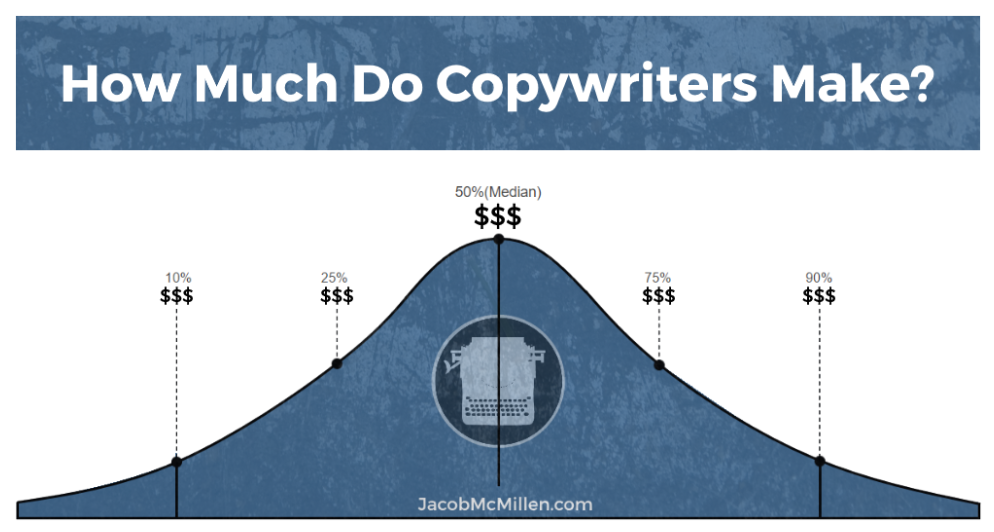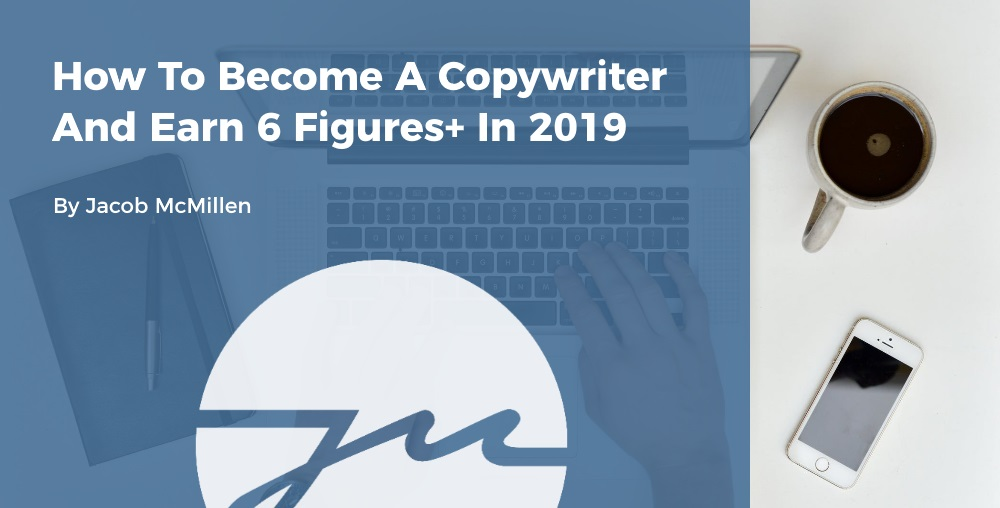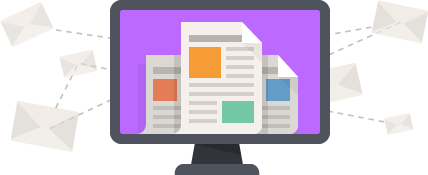Knowing how to write a great headline is kind of like cheating.
It’s pretty easy to do once you figure out the formula, and once you can write great headlines, you get 80-90% of the benefits of being a great writer, without actually having to become a great writer.
If you don’t really care about learning how to write a headline, and you just want to find a plug-and-play headline formula for a project you’re working on – no worries – just click on one of the options below:
- Email Headline Formulas
- Value Statement Headline Formulas
- Blog Post Headline Formulas
- SEO Headline Formulas
- Lead Magnet Headline Formulas
If you are interested in investing a few minutes to develop a writing skill that will give you a notable edge, pretty much regardless of your role or career, continue reading to learn how to write an amazing headline.
The 2-Part Objective Every Headline Shares
I’m all about context. For me, the specifics don’t really matter until I know what my goal is and why.
So let’s talk about the goal of a headline.
Every headline has a 2-part goal.
The first part is universal and shared by every single headline.
Part 1: Grab the reader’s attention.
If you don’t secure the attention of the reader, nothing else really matters.
It’s over. You failed.
Remember that headline you didn’t find interesting enough to finish reading?
No, you don’t.
There are a number of things we can do to grab attention:
- Stand out visually
- Use attention-grabbing keywords
- Be concise
Attention is essential, but it’s not really an objective unto itself. Capturing attention isn’t particularly valuable if we can’t do anything with it. We need more.
And that’s where the second part of our goal comes into play.
Part 2: Motivate the reader to continue reading.
This is where things get a bit more complex.
Sometimes this is as simple as “move your eyes down a line and continue reading.”
Often, it’s more like, “Click a button, so you can continue reading.”
And in rare cases, it’s something like, “Open this envelope, so you can continue reading.”
There are a number of things we can do to get people to continue reading:
- Make a clear promise
- Create a curiosity hook
- Reference a topic the reader is interested in
- Reference a person or brand the reader is interested in
The main point here is that headlines are about grabbing attention and channeling that attention into further reading.
Now that we understand what we’re trying to accomplish with our headlines, let’s break down the most common types of headlines we’ll encounter online and in the workplace.
5 Types Of Headlines Everyone Should Learn
If you are just meeting me, I’m a freelance copywriter who has been writing headlines, value statements, landing pages, blog posts, and all sorts of revenue-generating words for the last 6 or so years.
That’s my day job, and I’ve worked with a wide variety of businesses and marketers throughout that time.
My side gig revolves around this blog, where I help freelance writers, marketers, and more general go-getters achieve more in their careers.
In thinking through all the people I’ve worked with and everything they do, I’ve landed on the following types of headlines as being the most essential and universally beneficial.
- Email Subject Line
- Value Statement Headline
- Blog Post Headline
- SEO Meta Title
- Lead Magnet Title
I think everyone should learn the first three, and then if you are a writer or marketer (which most of my readers are), the full five are definitely worth your time.
Each of these types requires a slightly different approach and methodology, so we are going to break them down one at a time.
1. How To Write An Email Subject Line
Email subject lines are a great place to start, because everybody writes them, and whether you are trying to get your coworker’s attention or the attention of 10,000 email subscribers, the basic formula is going to stay the same.
As we know, the first step is to grab attention.
Let’s think of the context. You need to grab attention via a single line that is being displayed within 20+ consecutive, homogenous lines.

That’s a tall order.
In the short term, we have two basic tools to provide visual differentiation:
- ► Symbols & Emojis
- ALL CAPS
Both of these can help your subject line jump off the page and grab the reader’s eye. I’ve personally found success using both methods… sparingly.

In reality, this is a bit gimmicky. The REAL, long term solution for grabbing attention is associating the name in the left hand column with quality content. That will instantly grab attention and result in your subject line being read.
And once we have the reader actually reading our subject line, we need to make sure it’s good enough for them to click.
How do we do that?
We have two main tools here:
- Make a promise
- Create curiosity
Here are some great examples from email list building expert Bryan Harris:

Notice how all of 5 of these either offer a promise or create curiosity:
- Creates curiosity about if/how he plans to help my business stop feeling stagnant
- Promises a customized road map for me
- Promises an extensive breakdown of his top 15 strategies
- Promises to fast track my email growth
- Creates curiosity to learn behind-the-scenes info on his system
Notice that Bryan’s headlines are all relatively short and concise. This is somewhat unique to email subject lines, since we are fighting against scanning and want to get to the point as quickly as possible.
Also notice that none of these headlines stand out as being uniquely genius or creative. You could write all these headlines.
And that’s the point.
Good headlines aren’t complicated. In fact, good headlines are a bit formulaic, and speaking of formulaic, here are some good formulas to use.
5 Email Subject Line Formulas
Are You Experiencing [Problem]?
Here’s The Secret Behind [Desired Result]
I’m Going To [Deliver Desired Benefit/Solution]
How To [Achieve Desired Result}
What Everyone Needs To Know About [Intriguing Topic]
2. How To Write A Value Statement Headline
Good lord, how many ways are there to say “value statement”?
- Value proposition
- Selling proposition
- Unique selling proposition
- Unique value statement
- Core value statement
- Core value proposition
- Etc, etc, etc
A value proposition is a statement that effectively summarizes what a business is offering, who they are offering it to, and ideally, what makes their offer special or unique. Here’s an example I wrote for a client:

What’s interesting to me is that writing a value statement is straightforward in theory, but in practice, it’s one of the more complex “headlines” to write.
In theory, this is really all you need to write a value statement:
So for example, my copywriting value statement could be: “I help businesses increase revenue by improving their writing.”
This works… technically. But it still kinda sucks, because it’s way too broad,
Let’s make it better by being more specific.
“I help B2B service businesses increase their online revenue by improving their website messaging.”
We got more specific with each fill-in-the-blank section:
- B2B service businesses > businesses
- Online revenue > revenue
- Website messaging > writing
Again, this is pretty straightforward, so why did I say writing value statements can be so complex?
Well… why isn’t the above statement the value proposition I used on my website copywriting page?

The answer is that I don’t like how it sounds, and I’m not willing to be as niche as I should be.
Ironically, the main reason value statements are challenging is because the person you are writing for will always have personal preferences you will have to factor in.
Value statements always feel personal. It’s a singular statement attempting to encapsulate someone’s business. And 95 times out of 100, they are going to be very particular about the end result and want it to reflect them personally.
If you’re lucky, you will only have to deal with one person’s preferences.
The trick to writing a great value proposition is to take the above formula and adapt it to the language of the owner.
This is why I always require my clients to submit a questionnaire. Not only do I need the info revealed in the answers, I want the language of the business owner aka my client. Ultimately, my goal as a copywriter isn’t to inject my own language and style into the client’s messaging. I want to take the client’s own language and style and create the best possible version of it – a version that is persuasive and gets results.
If you are writing a value statement for yourself, it should be a lot easier, because you only have to satisfy yourself… but of course, we both know that’s impossible… RIP.
So how do you write a value statement?
- Fill in the formula: I help [audience/niche] to [achieve result/solve problem] by [service/product].
- Examine the resulting statement and adapt it to fit the language of the client.
- If the result is too wordy, find a more concise way to say it or experiment with the format (headline/subheadline, headline + bullet points, headline + video, etc.). Headline/subheadline is the most common format, but it’s not the only viable option.
5 Value Statement Headline Formulas
I Help [Audience/Niche] To [Achieve Result/Solve Problem] By [Service/Product]
I [Provide Solution/Results] For [Target Audience]
Stop [Experiencing Problem], Start [Getting Benefits/Solution]
[Experience These Benefits] Through [Service/Product]
[Brand] Lets You [Experience Benefit #1] And [Experience Benefit #2]
3. How To Write A Blog Post Headline
Okay, time for the fun stuff.
Blog post headlines are pretty easy to write. The challenge is more in aligning the content to really deliver on a good headline promise.
With blog post headlines, our goal is really just to make a clear promise, and if it’s a popular topic, include how we are going to make the content more worthwhile than the 50 other posts on that topic.
We can do this by referencing original data or experiences that we are bringing to the table:

We can also do this through a question or a visual:

Or we can promise something that sounds a bit outlandish:

This works and it works really well across industries.
Here’s an example from a brand new spirituality blog that picked up 2,000 shares and over 20,000 visitors.

Or this post, which performed so well, it landed me my first $5k+ writing gig.

Your options are virtually limitless with blog post headlines. The key is to make a promise, drum up some curiosity, and ask yourself, “Does this headline make me feel like I need to stop what I’m doing and see what it has to say?”
5 Blog Post Headline Formulas
How To [Accomplish Something/Get Specific Result]
Here’s A Quick, Easy Way To [Get Benefit/Solve Problem/Achieve Result]
Why [Doing Common Thing] Is [Producing Unfavorable Result] And What To Do Instead
What Everyone Needs To Know About [Topic]
How I [Accomplished Desirable Thing] In Just [Favorable Timeline]
4. How To Write An SEO Meta Title
This one is my personal favorite, because I really love SEO… and SEO really loves me.
An SEO meta title is essentially your Google headline – you are saying, “Hey Google, use this in your search results and evaluate my content through this lens.”
When writing a meta title, you need to do four things:
- Include the target keyphrase for the page in the meta title
- Keep the headline under 70 characters in length
- Match the headline promise to the search intent
- Grab attention & influence the reader to click (standard headline stuff)
If you are writing a meta title, you probably have a target keyphrase that you are targeting with the blog post or landing page. It’s important to include this keyphrase in the meta title, and it’s important that the promise made in the headline matches the intent of the person typing that keyphrase into Google.
From there, just keep it under 70 characters, so the full headline displays in search results, and then do all the normal headline stuff – grab attention and persuade the reader to click.
This sounds like a lot, but it’s pretty straightforward. Let’s look at an example.
I wrote this blog post to target the keyphrase “how to become a copywriter”.
I thought through what someone typing that keyphrase into Google would want to see and came up with the following:

This isn’t particularly creative, but it is intentional. I included the full keyphrase in the headline and then spiced it up a bit by promising a desired outcome (6 figures) and setting a defined timeline (within the year).
I set the meta title using a WordPress plugin called The SEO Framework.

And thanks to my headline, great content, and good onpage SEO, I’m currently the 7th result in Google for the target keyphrase, just 3 months after publishing.

Writing SEO meta titles is typically going to be more formulaic, because a lot of your real estate will be devoted to the keyphrase, and then the rest tends to follow some standard themes.
5 SEO Meta Title Formulas
[Keyphrase] In 2019
[Keyphrase] In The Next 24 Hours/Days
The Complete Guide To [Keyphrase]
The Top 10 [Keyphrase] In 2019
How To Use [Keyphrase] To Get [Desired Result]
5. How To Write A Lead Magnet Title
Last and probably least we have lead magnet headlines.
If you aren’t familiar with lead magnets, they are something we give away in exchange for someone’s email address.
For example:
If you look to the right (assuming my website design hasn’t changed since writing this), you will see 3 colored blocks with headlines inside of them. Clicking on one of them will take you to a page where you can give me your email in exchange for a mini ebook.

Lead magnet headlines are essentially blog post headlines where we need to focus more on urgency than anything else.
With a blog post, all we really need is enough interest to trigger a click, and people are very free with their clicks. With a lead magnet, we need to be compelling and urgent enough to coax out an email address, and people aren’t nearly as liberal with their email addresses as they used to be.
How do we do this?
Well it starts with the topic we select for the lead magnet.
- “Get More Traffic” isn’t going to cut it.
- “Become A Freelancer” isn’t going to cut it.
- “Make More Money” isn’t going to cut it.
You can find resources on all those topics literally any time. Our goal with a lead magnet is to basically trigger the thought “This might have info I really need. I don’t want to miss it.”
It doesn’t need to trigger this for everyone. It only needs to work on the intended audience.
In addition to the topic, the way we present the headline can have a big impact as well. Here’s how we could make the above topics a bit more compelling, even though the core topics are still too vague:
- Triple Your Traffic In The Next 3 Months Without Spending An Extra $1
- How I Hit Six Figures In My First Year As A Freelancer
- The 3 Money Making Strategies I Used To Double My Income In 30 Days
These headlines depend on the writer having achieved some pretty fantastic results, and that sort of speaks to the nature of great content. The best, most intriguing content is derived from fantastic results.
But we aren’t always going to have the luxury of fantastic results to cite when creating a headline, so let’s look at some more average examples.
Let’s evaluate my three lead magnet headlines in the sidebar (below the post on mobile):
- How To Write Landing Page Copy From Scratch
- How To Drive Growth On A Limited Budget
- The “Overpaid” Writer’s 3-Year Career Blueprint
Based on my own criteria, I’d rate all of these as a “B”. I’m relying almost entirely on topic fit for each one and not really supplying a whole lot of urgency with the headlines.
The first one is a pretty good example of how picking the right topic can carry your lead magnet. This one has the highest conversion rate by far at around 53%. There are a lot of people who struggle looking at a blank page, and the phrase “from scratch” resonates with them.
The second one just kinda sucks.
It’s too vague. “Limited budget” is a solid phrase, but the headline isn’t doing enough to bring it home.
Some of these options would be a lot more powerful:
- How To Double Your Customers On Just $2k Per Month
- The 2 Best Marketing Strategies On A $2k Per Month Budget
- How To Get Business-Changing Marketing Results On Less Than $2k Per Month
The third one is okay, but I could probably improve it to an “A” with by leaning more into the original data/firsthand experience that makes the content good.
- The 3-Year Blueprint I Used To Build A 6-Figure Freelance Writing Business
- Every Step Of My 3-Year Journey To Becoming An “Overpaid” Freelance Writer
- Follow This 3-Year Blueprint If You Want A 6-Figure Writing Business
You might notice that all of these are a lot longer than the originals.
That’s the trick.
Being able to say more without needing more room to say it is an art form. Fortunately, you don’t need to be that artistic to get results. Just say what you need to say, and that’s usually enough.
5 Lead Magnet Title Formulas
How To [Accomplish Goal] Like [Person/Brand Known For Goal]
10 Critical Mistakes [Target Audience] Are Making Right Now
Are You Making These 10 Critical [Important Topic] Mistakes?
10 Proven Ways To [Get Important Benefit] In [Short/Reasonable Timeframe]
25 Plug-And-Play Templates That Will Help You [Accomplish Important Task]
Next Steps
I hope you’ve found this guide to writing headlines helpful. We’ve covered a lot, but of course, there’s so much more available to discuss.
Writing great headlines, like writing great copy in general, is more about pulling from what has worked in the past than being creative and inventing new stuff. According, I like to reference a “swipe file” of great examples, templates, and case studies during my day-to-day work.
If you’d like free access to this swipe file, enter your email below, and I’ll send it your way. This includes my favorite headline resource of all time, which comes with another 50+ formulas for you to pull from.





